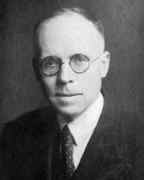Person: Milne (3), Edward Arthur

Arthur Milne was an English mathematician and astrophysicist who worked on the structure of stars and developed an alternative to the theory of relativity.
Mathematical Profile (Excerpt):
- Milne attended Hymers College (an endowed school) in Hull for his secondary schooling and from there he won an open scholarship in mathematics and natural science to study at Trinity College, Cambridge.
- Milne's defective eyesight prevented him from active service in World War I.
- Milne also increased the understanding of wind and sound, in the course of refining the huge binaural listening trumpets which detected aircraft at night.
- Under the team's leader A V Hill, and R H Fowler (with whom Milne later collaborated) Milne received a marvellous training in how to do research.
- In 1919 Milne returned to Cambridge but not with the intention of either completing his undergraduate degree or of studying for a doctorate.
- Elected a Fellow of Trinity College shortly after he came back to Cambridge, Milne was appointed assistant director of the Solar Physics Observatory in Cambridge in 1920.
- Milne combined the two approaches and came up with an integral equation of great mathematical interest which is now known as Milne's integral equation.
- In 1922 Milne won a Smith's Prize at Cambridge for an essay on the darkening of the limb of a stellar disk.
- We mentioned above that Milne collaborated with R H Fowler; they cooperated in 1923 in studying absorption lines in stellar spectra.
- Milne was appointed to succeed Chapman as Beyer professor of applied mathematics at Manchester, taking up the post in 1925.
- From around the time that Milne took up the Rouse Ball Chair at Oxford, he moved on to another research topic, this time studying the structure of stars.
- After about three years concentrating on a mathematical theory of stellar structure, Milne turned his attention to cosmology.
- Milne's books include Thermodynamics of the Stars (1930) which contains material relating to his Smith's Prize essay discussed above, Relativity, Gravitation and World-Structure (1935), and Kinematic Relativity (1948).
- Milne received many honours during his career.
- Milne had the humility and simplicity of character that often goes with scientific genius, and he bore personal misfortunes with courage, dignity, and religious conviction.
- As a young man Milne had suffered from encephalitis lethargica.
- Milne contracted the disease in 1924, and had made a good recovery by 1925.
- Usually associated with the disease there are Parkinson type symptoms which appear later in life, and this was so with Milne, in whom the after effects appeared around 1945.
- Milne died from a heart attack in Dublin while attending a conference of the Royal Astronomical Society.
Born 14 February 1896, Hull, Yorkshire, England. Died 21 September 1950, Dublin, Ireland.
View full biography at MacTutor
Tags relevant for this person:
Astronomy, Origin England, Physics
Thank you to the contributors under CC BY-SA 4.0! 

- Github:
-

- non-Github:
- @J-J-O'Connor
- @E-F-Robertson
References
Adapted from other CC BY-SA 4.0 Sources:
- O’Connor, John J; Robertson, Edmund F: MacTutor History of Mathematics Archive
